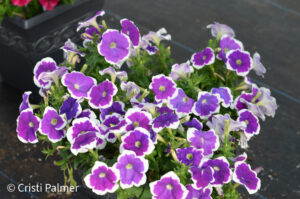
At the IR-4 Ornamental Horticulture Program Workshop in 2009, Pythium Efficacy was selected as a high priority project to expand the knowledge and list of fungicides available to growers for these diseases.In addition to research collected through the IR-4 program, this summary includes a review of experiments conducted from 1999 to 2010 on ornamental horticulture and vegetable crops. During this time period, numerous products representing 33 active ingredients were tested as drench, foliar or soil applications against several Pythium species causing root rot and damping-off on ornamentals, and root rot, cottony leak, damping-off and cavity spot on vegetables. Pythium species tested included: P. aphanidermatum, P. irregulare, P. mamillatum, P. dissotocum, P. myriotylum, P. ultimum and P. vipa. Most trials were conducted on P. aphanidermatum and P. ultimum. Although there were insufficient data for definitive conclusions, several relatively new products that are included in a 2010 Pythium efficacy project looked promising. These were Adorn, Disarm, Fenstop, Heritage and Pageant. V-10208 also looked promising. The phosphorus acids/phosphorus acid generators (Ari-Fos, Alude, K-Phite, Magellan, Phostrol or Vital) provided mix results. BW240 and CG100 were generally ineffective. The established standards Subdue Maxx and Terrazole/Truban generally performed well. Conversely, the registered biological products Companion/QRD 713, PlantShield/RootShield and SoilGard generally looked ineffective. The data from these trials suggest that the effectiveness of some fungicides in controlling Pythium root rot may vary, depending on the species of Pythium or crop.


